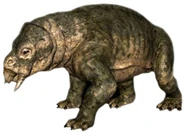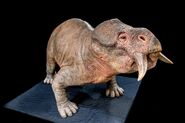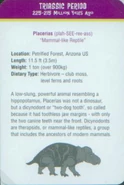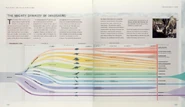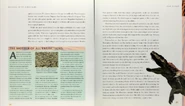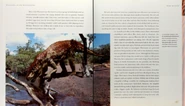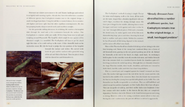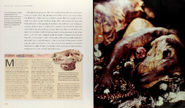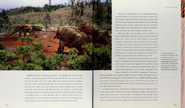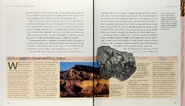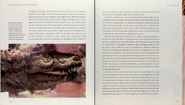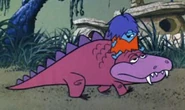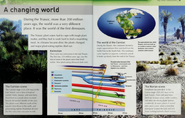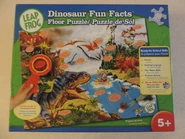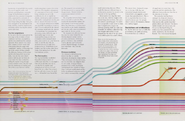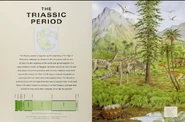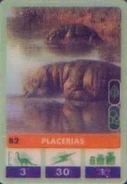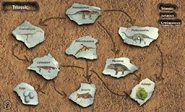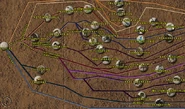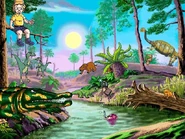| Placerias Temporal range: Late Triassic | |
|---|---|
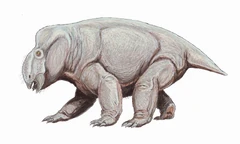
| |
| A restoration of Placerias hesternus | |
| Scientific classification | |
| Kingdom: | Animalia |
| Phylum: | Chordata |
| clade: | Synapsida |
| Order: | Therapsida |
| Infraorder: | †Dicynodontia |
| Family: | †Stahleckeriidae |
| Subfamily: | †Placeriinae |
| Genus: | †Placerias Lucas, 1904 |
| Referred species | |
| |
Placerias was a mammal-like reptile that lived during the Triassic Period. Lystrosaurus is one of its relatives. They have a small frill just like Protoceratops.
Description[]
Placerias was one of the largest herbivores in the Late Triassic, measuring up to 3.5 metres (11.5 ft) long and weighing up to a tonne (1000 kilograms) with a powerful neck, strong legs, and a barrel-shaped body. There are possible ecological and evolutionary parallels with the modern hippopotamus, spending much of its time during the wet season wallowing in the water, chewing at bankside vegetation. Remaining in the water would also have given Placerias some protection against land-based predators such as Postosuchus. Placerias used its beak to slice through thick branches and roots with two short tusks that could be used for defence and for intra-specific display. Placerias was closely related to Ischigualastia and similar in appearance.
Discovery[]
Fossils of forty Placerias were found near St. Johns, southeast of the Petrified Forest in the Chinle Formation of Arizona. This site has become known as the 'Placerias Quarry' and was discovered in 1930, by Charles Camp and Samuel Welles, of the University of California, Berkeley. Sedimentological features of the site indicate a low-energy depositional environment, possibly flood-plain or overbank. Bones are associated mostly with mudstones and a layer that contains numerous carbonate nodules. It is also known from the Pekin Formation of North Carolina.
Placerias was originally considered the last of the Dicynodonts until fossil finds from Queensland were reported in 2003 to have revealed that the Dicynodonts survived until the Early Cretaceous. Agnolin et al. (2010) called for a reconsideration of that Australian specimen, noting its similarity to baurusuchian crocodyliforms such as Baurusuchus pachecoi.
In popular culture[]
- It appeared in Walking with Dinosaurs, it appeared in the first episode and one (probably the oldest of the herd) was ambushed, mortally wounded and eaten by a Postosuchus.

